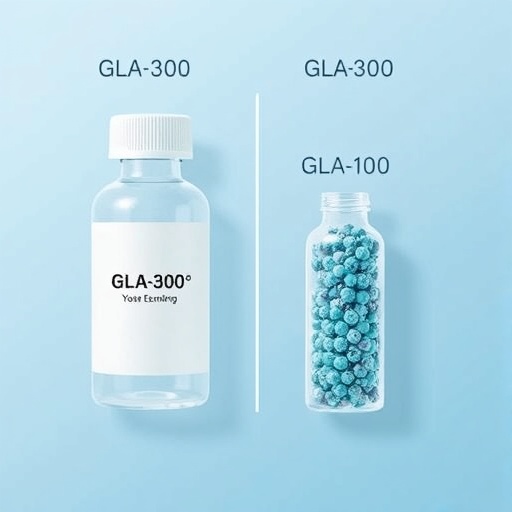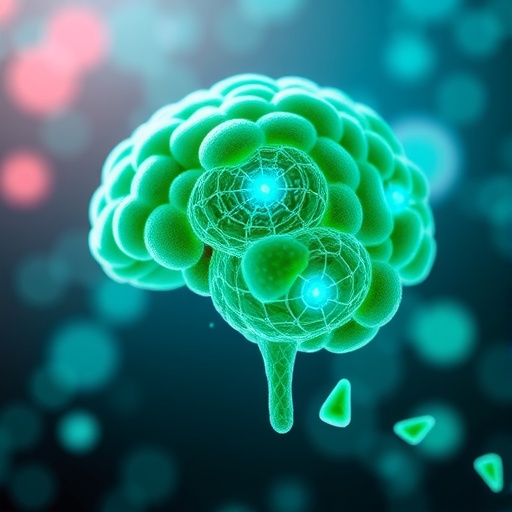In an enlightening breakthrough poised to reshape our understanding of sudden unexplained deaths, researchers have unveiled striking parallels among three devastating conditions: Sudden Arrhythmic Death Syndrome (SADS), Sudden Infant Death Syndrome (SIDS), and Sudden Unexpected Death in Epilepsy (SUDEP). This groundbreaking study, published in the International Journal of Legal Medicine, delves deeply into the overlapping pathophysiological mechanisms that underlie these enigmatic phenomena, suggesting they may represent differing manifestations of a common biological vulnerability—a concept metaphorically described as “three sides of the same pyramid.”
Sudden, unexplained deaths have long frustrated clinicians and families alike due to their unpredictable and often bewildering nature. SADS primarily claims the lives of young, apparently healthy adults without identifiable structural heart disease, while SIDS predominantly affects infants during sleep. SUDEP, affecting individuals with epilepsy, remains equally perplexing, occurring unexpectedly in those suffering from recurrent seizures. The new inquiry synthesizes emerging evidence, proposing a unified framework that integrates cardiac, neurological, and autonomic dysfunction as central players in all three conditions.
Central to this hypothesis is the identification of genetic variants implicating ion channelopathies—mutations affecting cardiac and neuronal ion channels responsible for electric signaling. These mutations can precipitate fatal arrhythmias or disrupt normal brain rhythm, culminating in sudden cardiac arrest or respiratory failure. Through advanced genetic sequencing techniques and molecular profiling, researchers have begun to unravel a shared substrate that predisposes seemingly disparate patients to abrupt fatal events regardless of age or primary diagnosis.
The autonomic nervous system emerges as a crucial mediator in this narrative. Regulating the delicate equilibrium of heart rate, respiration, and arousal from sleep, its dysfunction can tip the balance toward fatal outcomes. Variants affecting autonomic control may blunt protective reflexes, causing lethal failures in cardiac rhythm and respiratory stability. In SUDEP cases, this autonomic impairment often coexists with seizure-induced respiratory abnormalities, suggesting a convergence of fatal pathways traditionally viewed as unrelated to heart disease.
Another layer of complexity involves disrupted brainstem signaling, which governs vital functions such as breathing and cardiac modulation. MRI and postmortem histopathological analyses have revealed subtle brainstem alterations in SIDS victims, echoing findings in epilepsy-related deaths. This shared neuropathology underscores the interaction between central nervous system malfunctions and peripheral cardiac events, advocating for an interdisciplinary approach that transcends conventional boundaries between neurology and cardiology.
The epidemiological overlap further supports the new paradigm. While SIDS is restricted to infants and SUDEP mainly affects individuals with epilepsy, the age range for SADS victims is more variable. However, all conditions exhibit seasonal variation, sleep state dependence, and a higher prevalence in males, suggesting common environmental and biological triggers influencing vulnerability. Maternal smoking, prematurity, and seizures represent risk factors crossing traditional diagnostic divides.
Importantly, this research promotes the reevaluation of autopsy procedures and investigative protocols post-mortem. By integrating genomic, neuroanatomical, and electrophysiological analyses, forensic pathologists can better ascertain subtle defects previously overlooked. The refined posthumous identification of underlying mutations holds the promise of not only explaining these tragic deaths but also identifying surviving family members at risk of inheriting malignant channelopathies.
From a clinical perspective, the recognition of shared mechanisms encourages novel preventative strategies. Cardiologists, neurologists, and pediatricians might collaborate to develop screening tools encompassing electrophysiological tests and genetic counseling across at-risk populations. Wearable technologies designed to continuously monitor cardiac and respiratory parameters during sleep offer promising avenues to detect premonitory signs, facilitating timely interventions to avert sudden death.
Moreover, these insights have profound implications for therapeutic interventions. Pharmacological agents targeting ion channel function or modulating autonomic tone could emerge as vital tools to stabilize electrophysiological homeostasis in vulnerable individuals. The potential to develop tailored therapies that mitigate the risk of sudden death addresses a critical unmet need in precision medicine.
This integrative approach also reshapes how scientists conceptualize sudden death beyond individual organ systems, embracing a holistic view recognizing the interplay between brain and heart. It challenges researchers to transcend disciplinary silos and embrace complex network models to decode fatal pathophysiological cascades. As the boundaries between neurology, cardiology, and genetics blur, a new era of collaborative research dawns, driven by the urgency to understand and prevent these catastrophic events.
The study further emphasizes the importance of public health initiatives aimed at reducing modifiable risk factors. Measures such as promoting smoke-free environments, ensuring safe sleep practices for infants, and optimizing seizure control are reaffirmed as essential components in mitigating the incidence of sudden deaths. This multifaceted strategy underscores prevention’s pivotal role, complementing advances in diagnostics and therapeutics.
Ethical considerations arise as genetic testing becomes more widespread, raising questions about counseling, privacy, and the psychological impacts on families. The potential for predictive genetic information to identify at-risk individuals must be balanced with careful communication and support structures. This ethical landscape demands thoughtful policies to guide clinical implementation without exacerbating anxiety or discrimination.
Looking forward, researchers highlight the necessity for longitudinal studies tracking identified at-risk populations to validate predictive markers and evaluate the efficacy of interventions. Large-scale databases integrating clinical, genetic, and post-mortem findings will be crucial to refine risk stratification models. Such efforts require sustained funding and international collaboration to accelerate the translation of these discoveries into practice.
Despite these promising developments, challenges remain in accounting for the full heterogeneity of these syndromes. Some sudden death cases resist explanation even with comprehensive analyses, indicating that unidentified factors—perhaps epigenetic modifications or environmental influences—may also contribute. Continued innovation in technology and methodology will be essential to uncover these layers.
In essence, this pioneering synthesis redefines our understanding of sudden unexplained deaths by positioning SADS, SIDS, and SUDEP as interlinked phenomena governed by common vulnerabilities in electrophysiological and autonomic regulation. By illuminating the shared foundations of these tragedies, the study opens new pathways to prevention, diagnosis, and therapy that hold the promise of saving countless lives.
The implications of this work extend beyond academic intrigue; they possess the transformative potential to influence clinical guidelines, forensic practices, and public health policies globally. As awareness grows and interdisciplinary strategies evolve, the vision of reducing the burden of sudden unexplained death becomes increasingly attainable. The hope is that future generations will face fewer tragedies thanks to the profound insights emerging from this integrated scientific endeavor.
Subject of Research:
Update on the similarities and shared pathophysiological mechanisms between Sudden Arrhythmic Death Syndrome (SADS), Sudden Infant Death Syndrome (SIDS), and Sudden Unexpected Death in Epilepsy (SUDEP).
Article Title:
Update on the similarities between SADS, SIDS, and SUDEP: Three sides of the same pyramid?
Article References:
Barranco, R., Caristo, I., Molinelli, A. et al. Update on the similarities between SADS, SIDS, and SUDEP: Three sides of the same pyramid?.
Int J Legal Med (2025). https://doi.org/10.1007/s00414-025-03612-0
Image Credits: AI Generated
Tags: autonomic nervous system rolecardiac and neurological dysfunctionepilepsy related fatalitiesfatal arrhythmias causesgenetic variants ion channelopathiesoverlapping pathophysiological mechanismsSADS sudden arrhythmic death syndromeSIDS sudden infant death syndromesudden death in infantssudden death in young adultssudden unexplained deaths researchSUDEP sudden unexpected death in epilepsy





